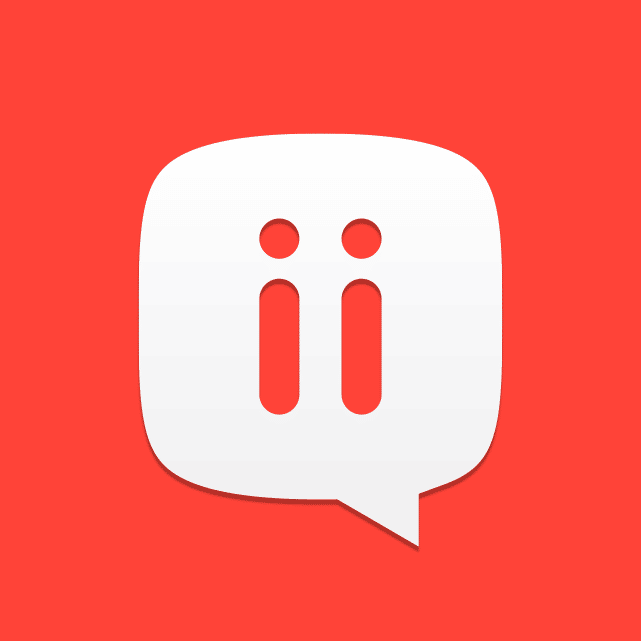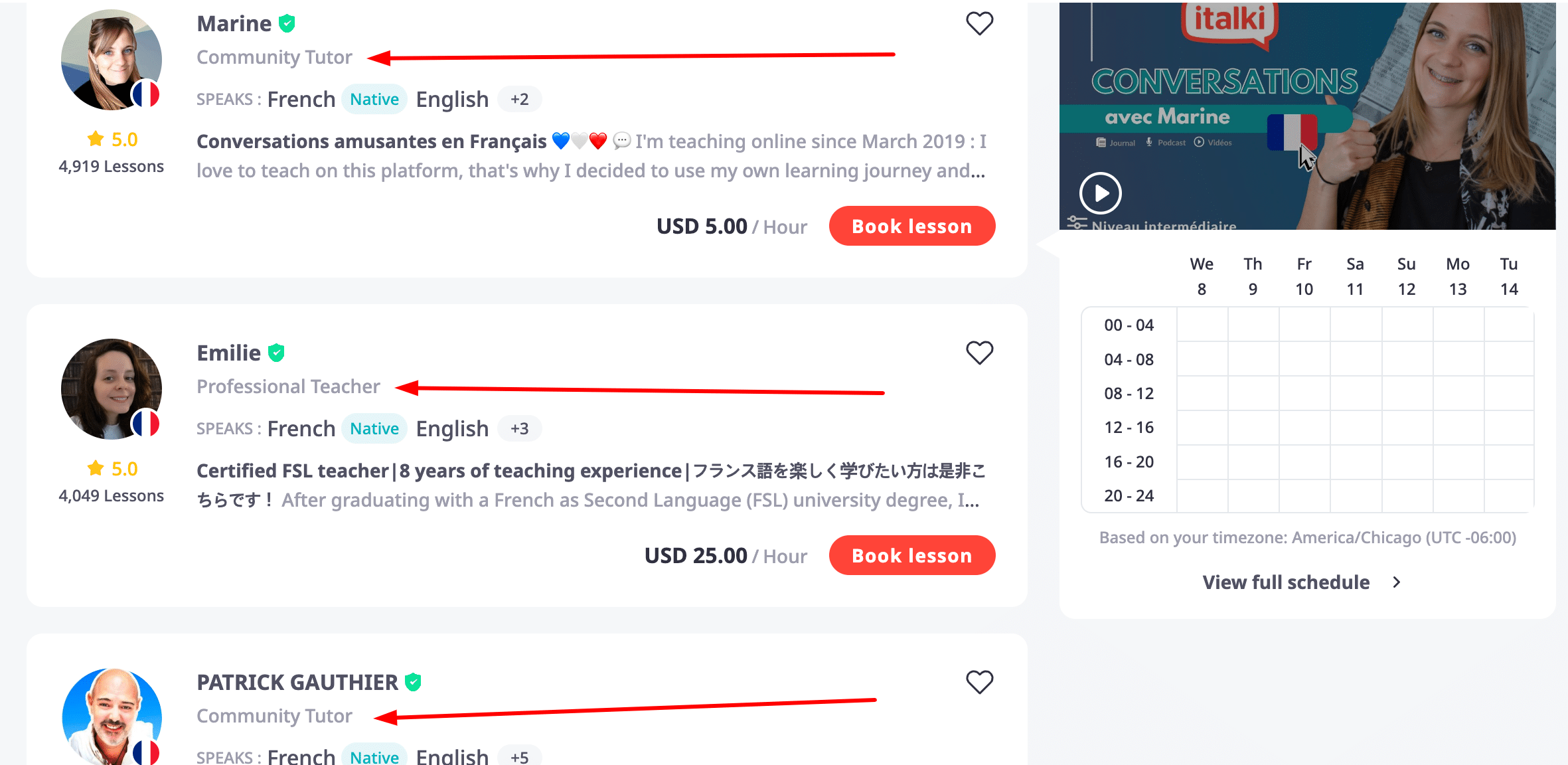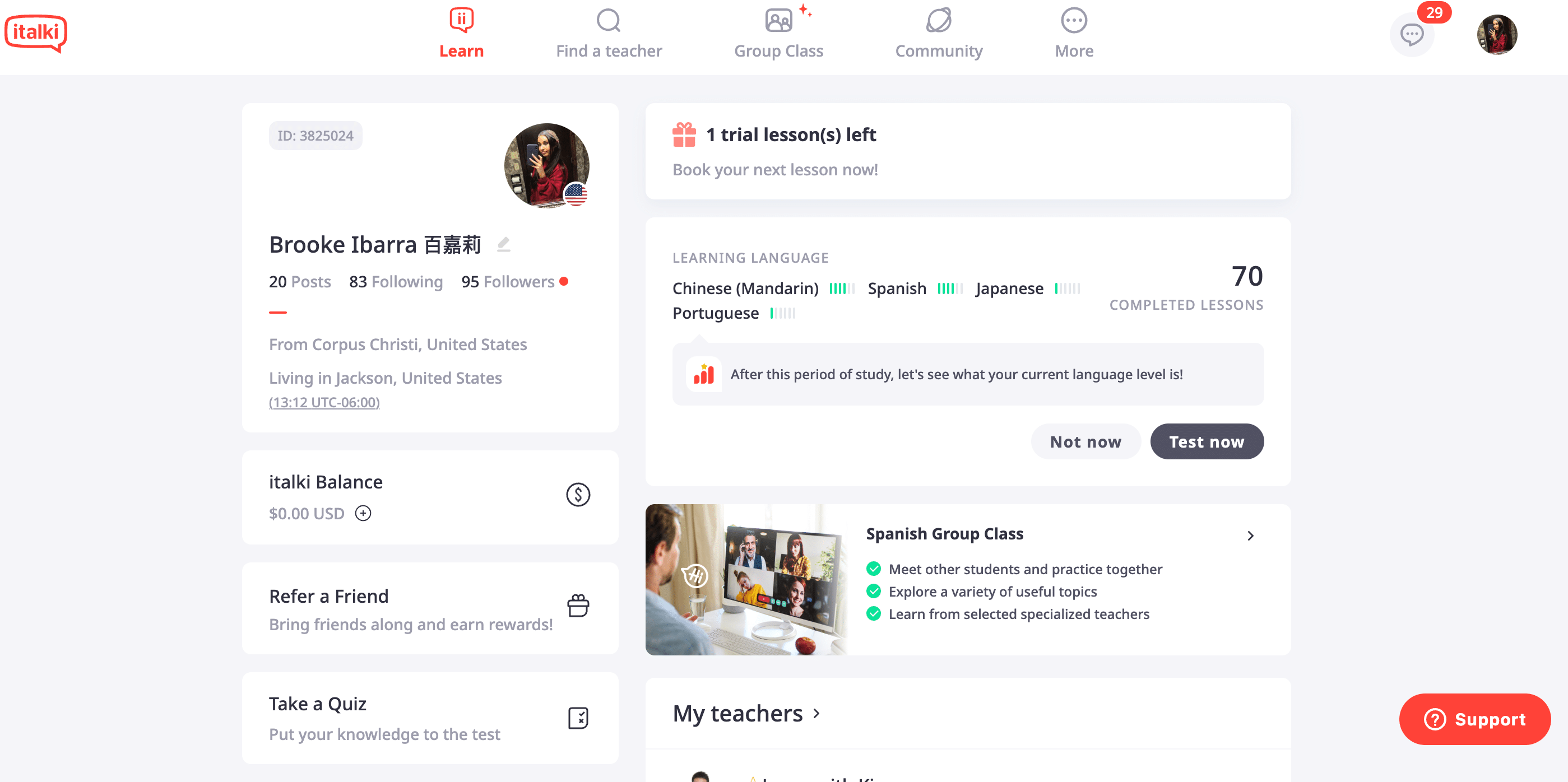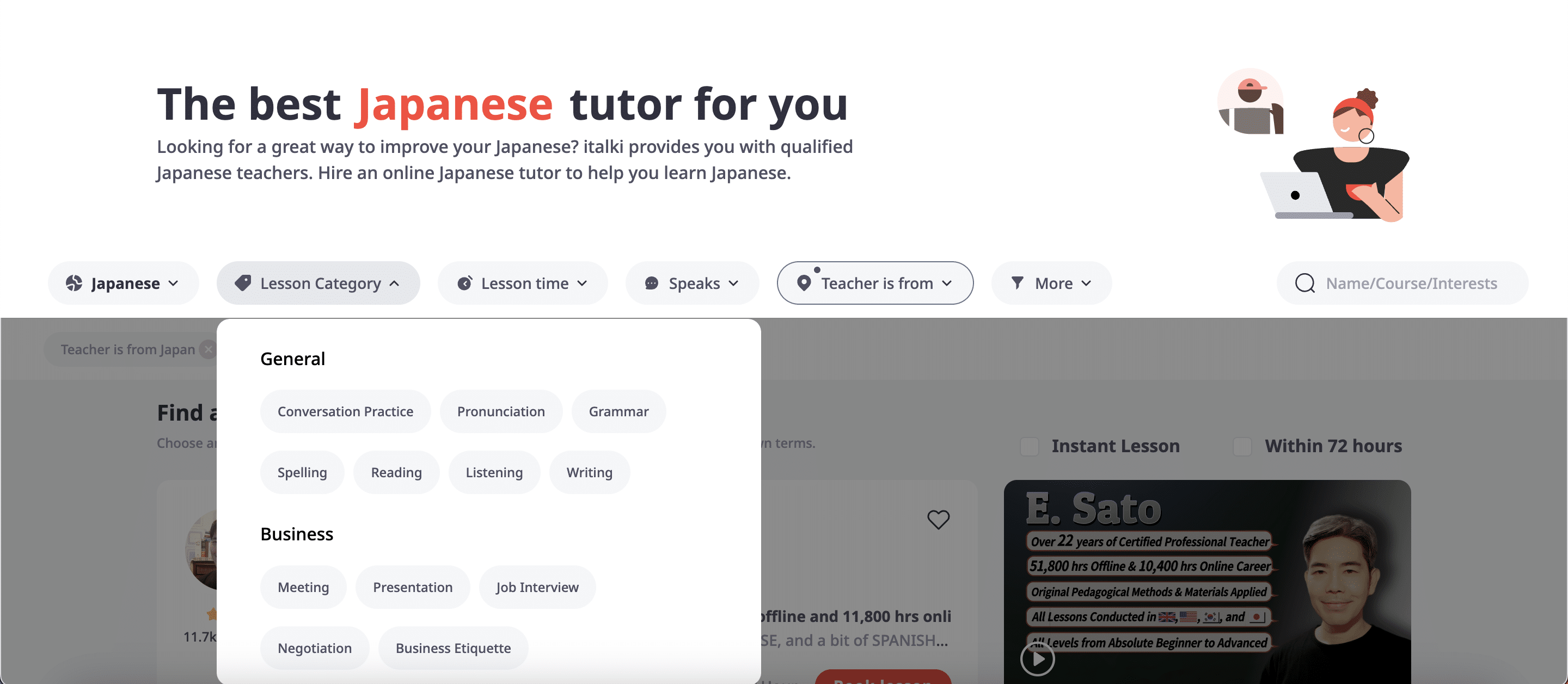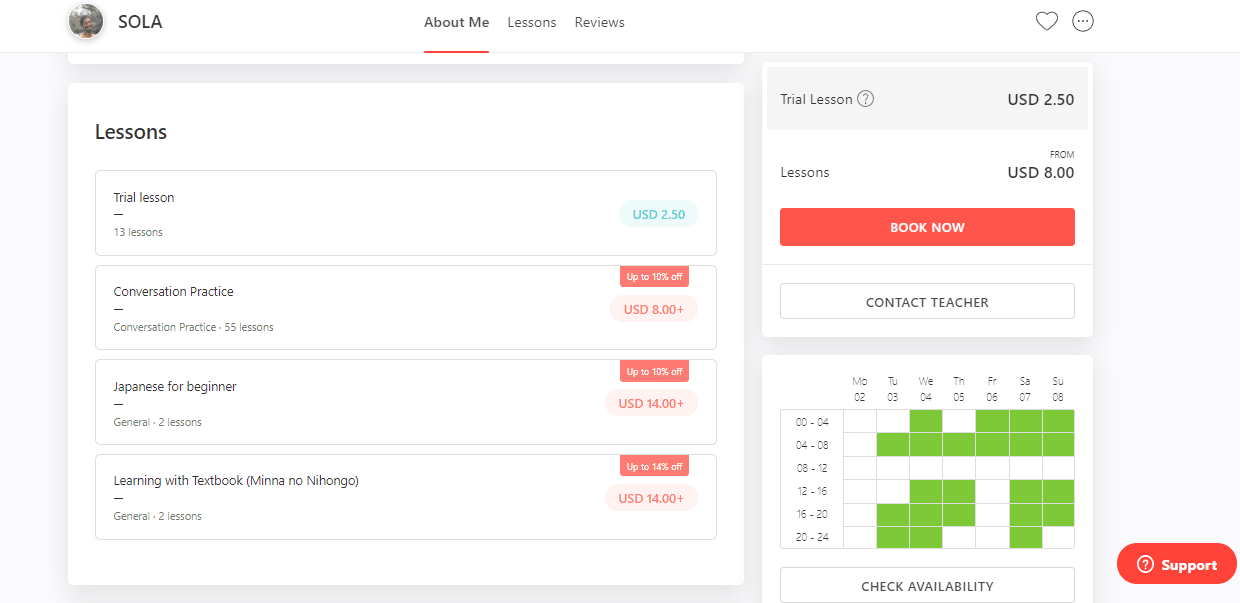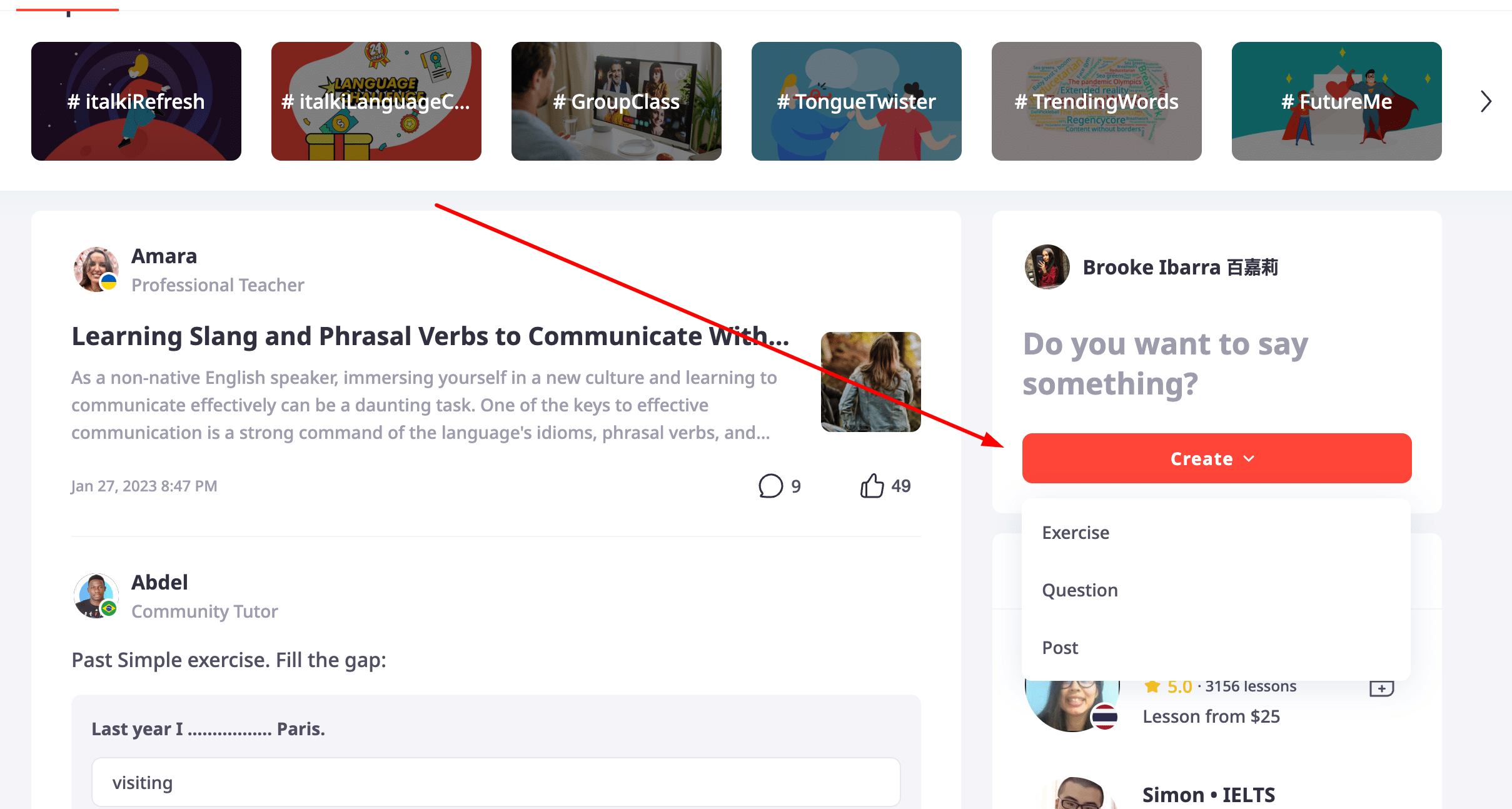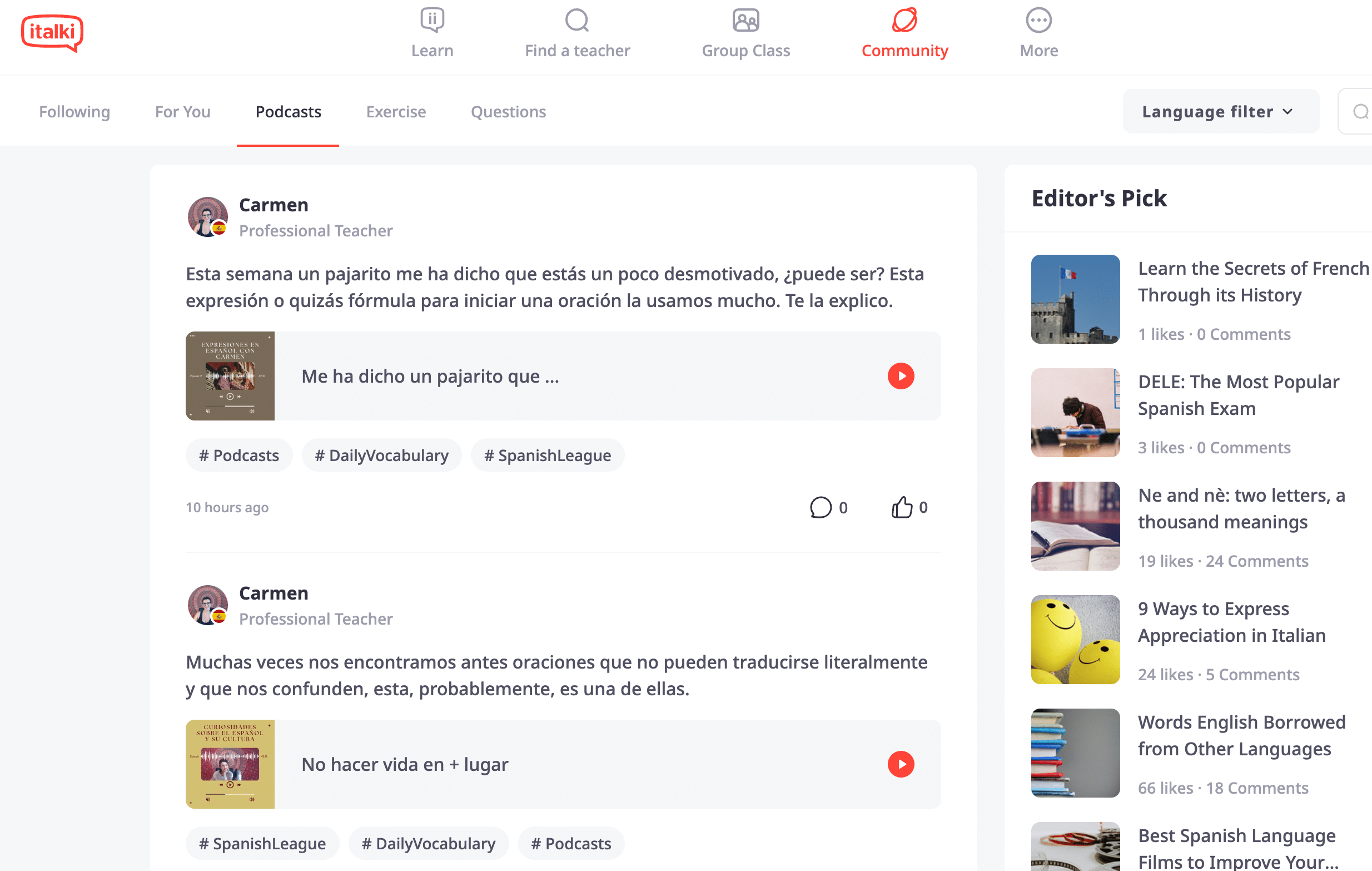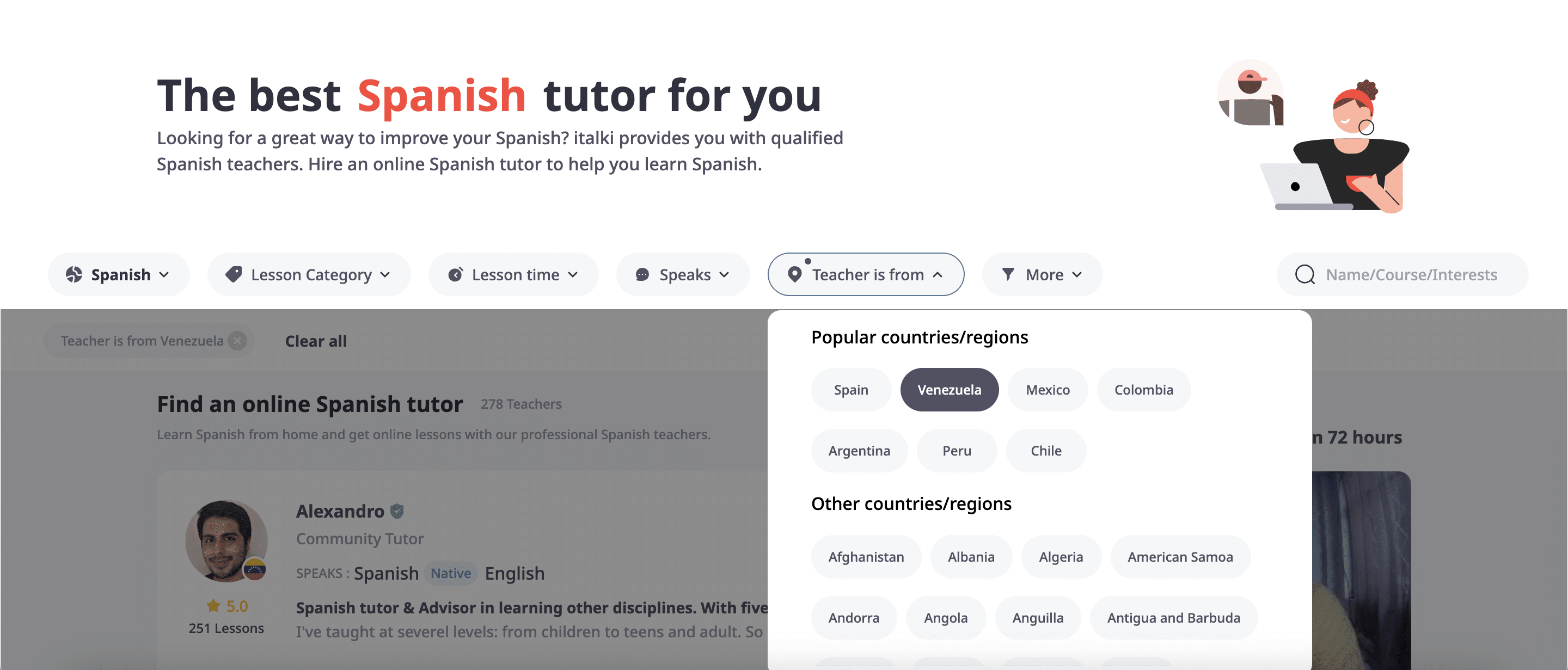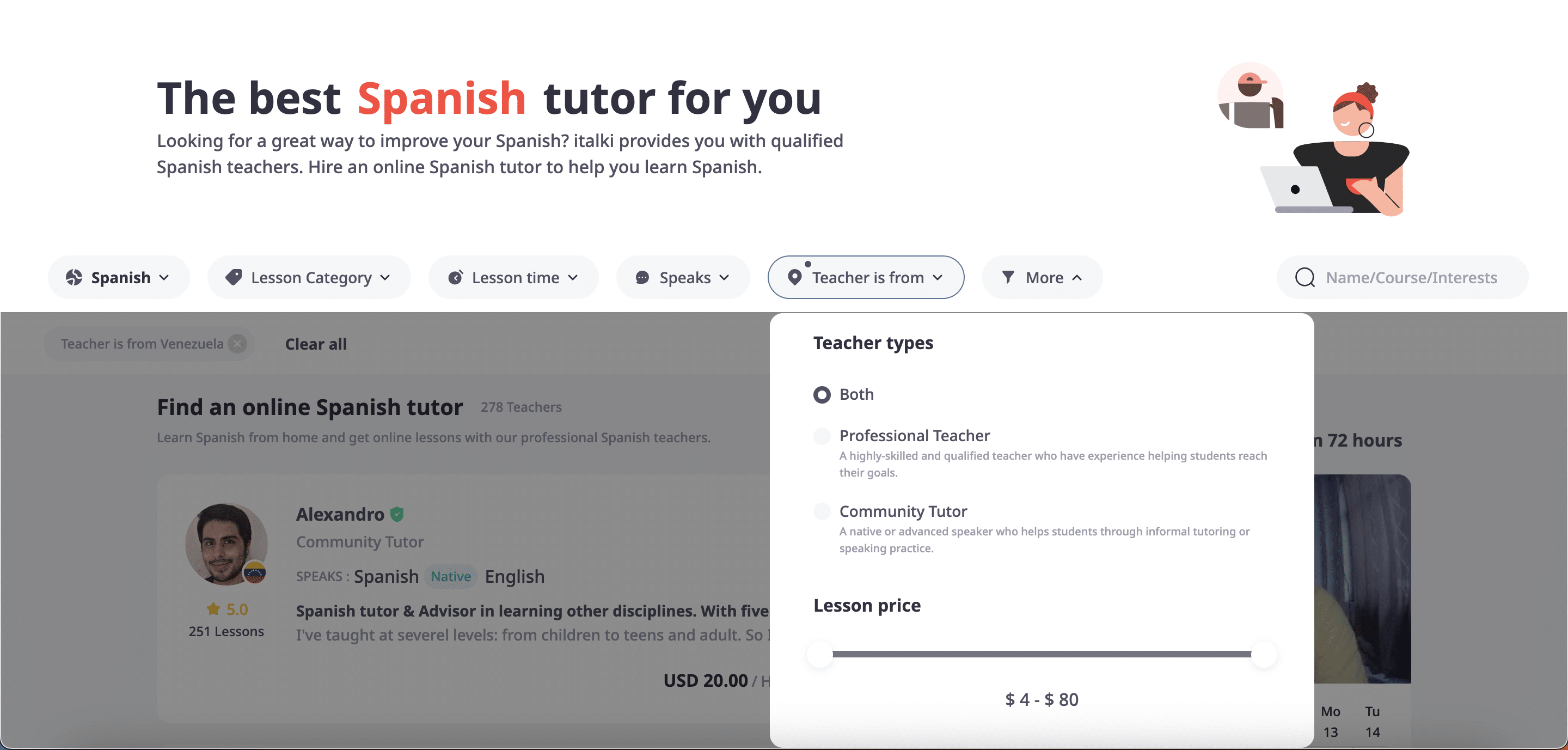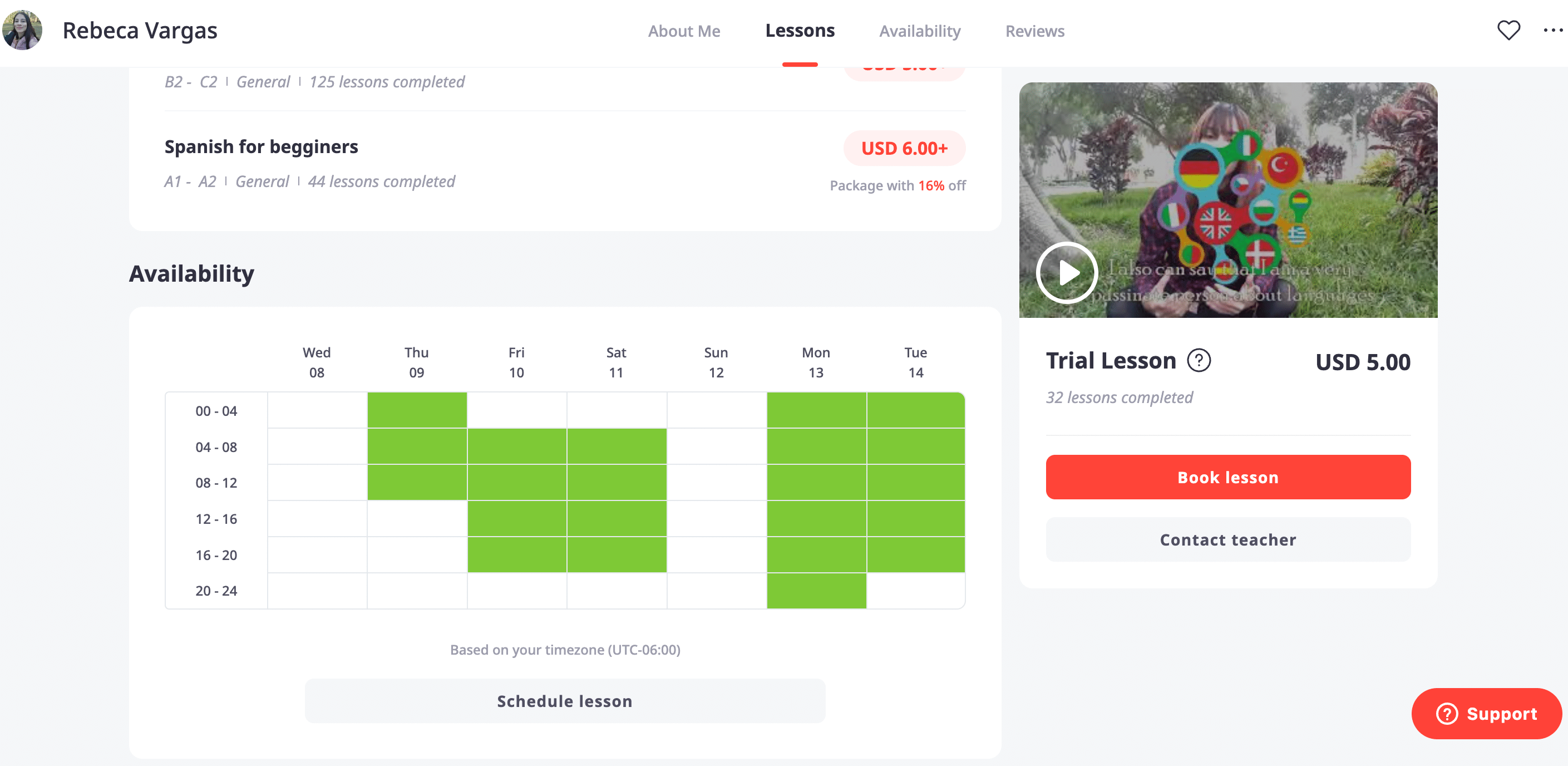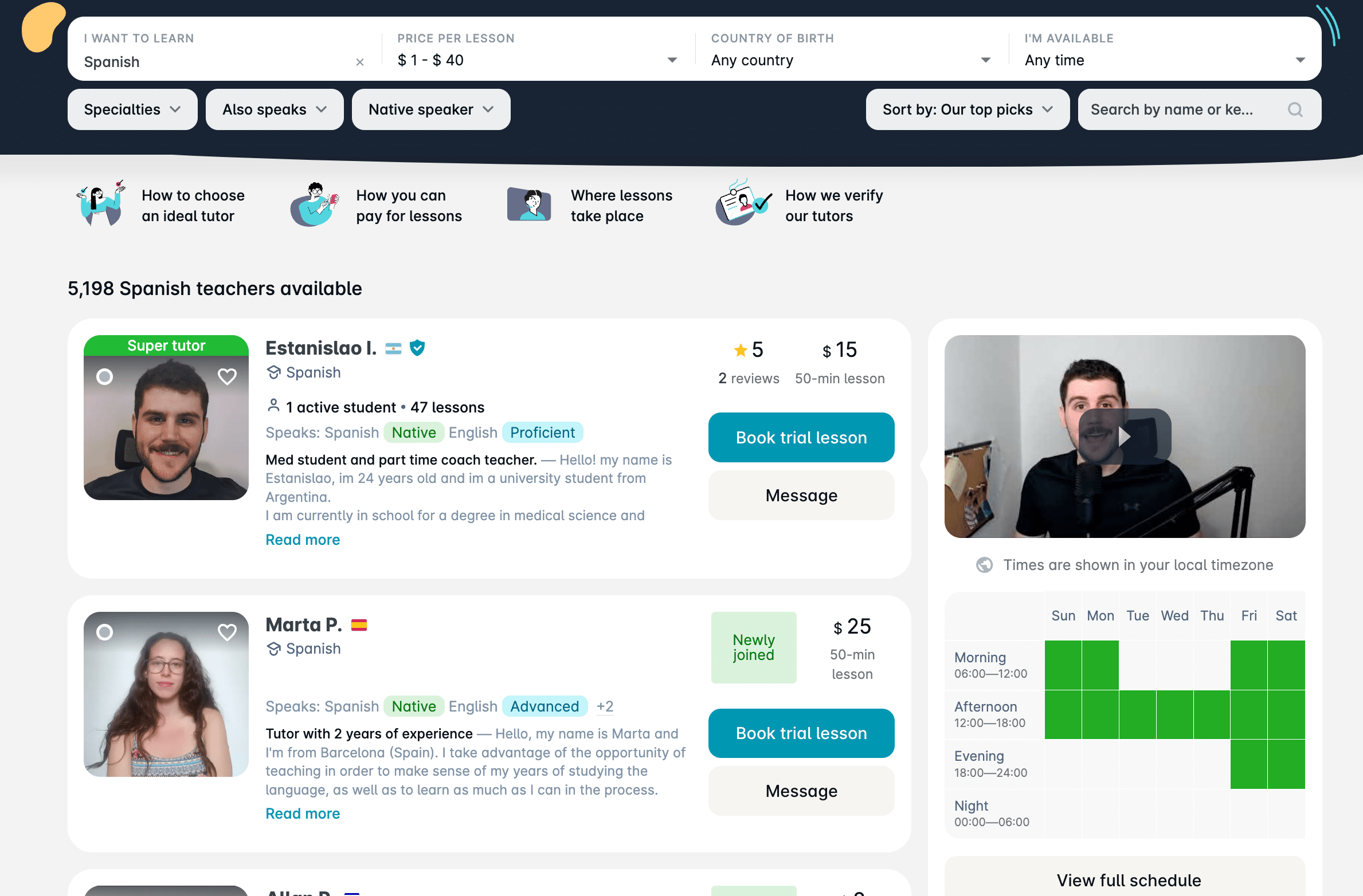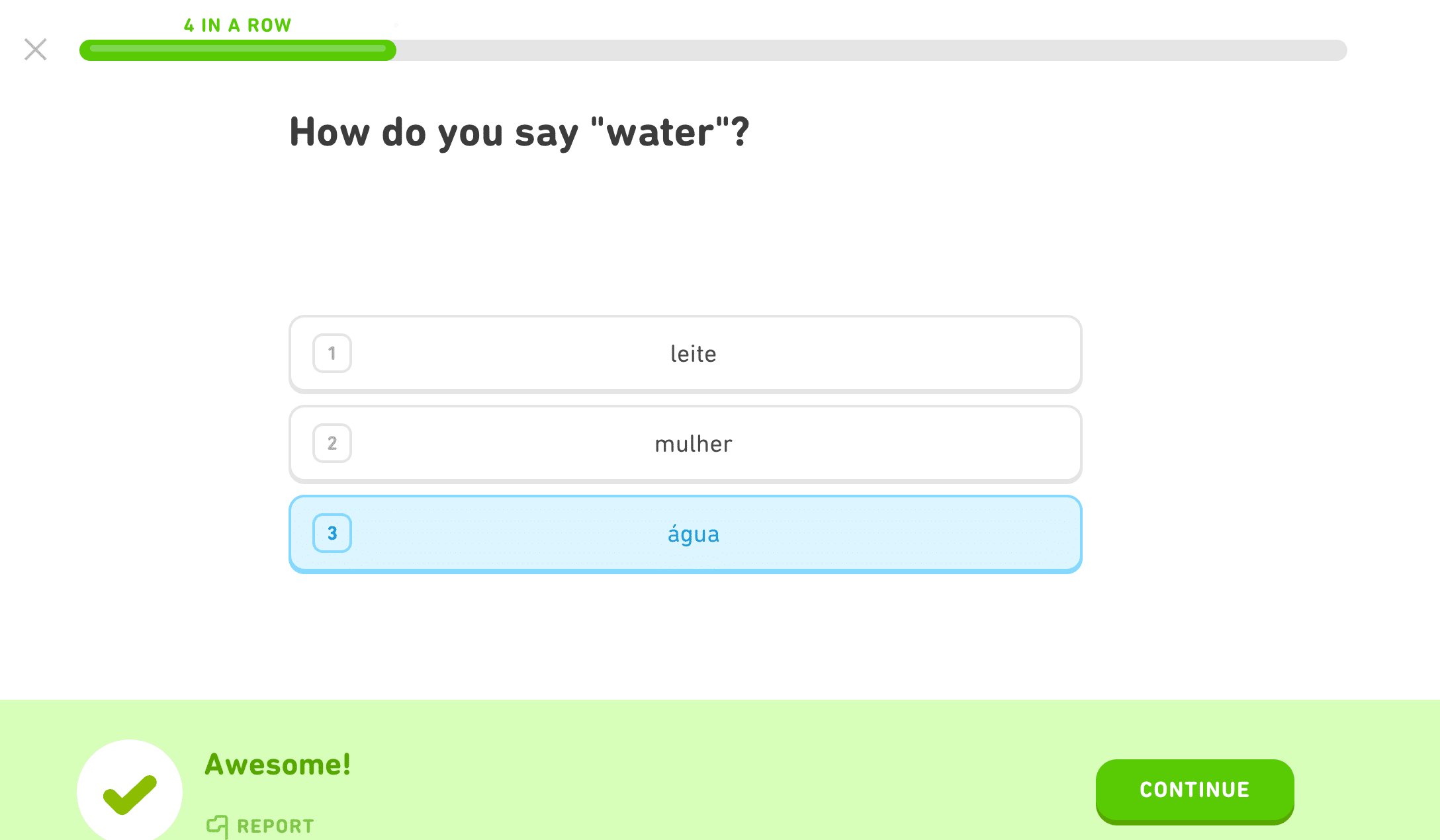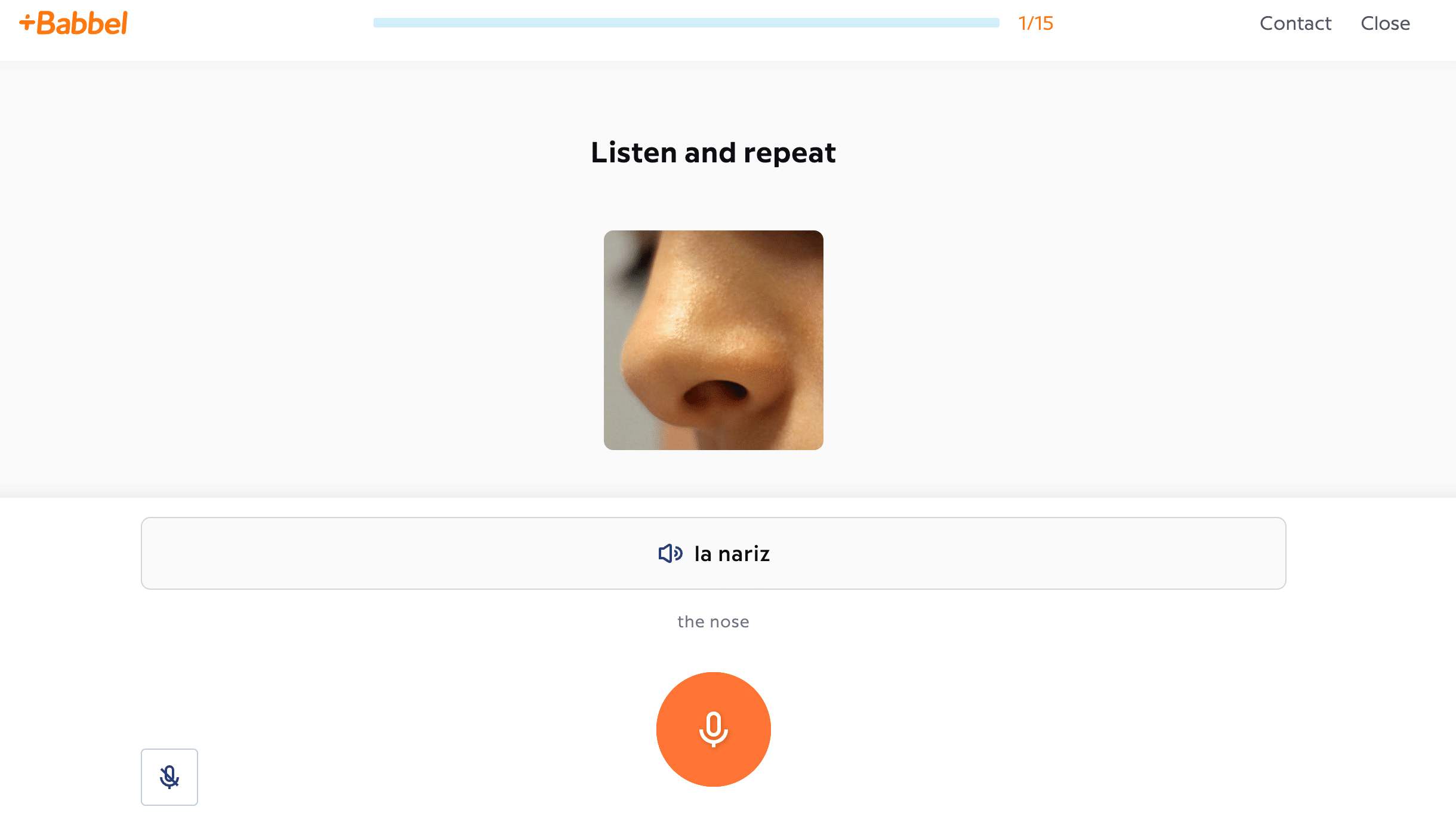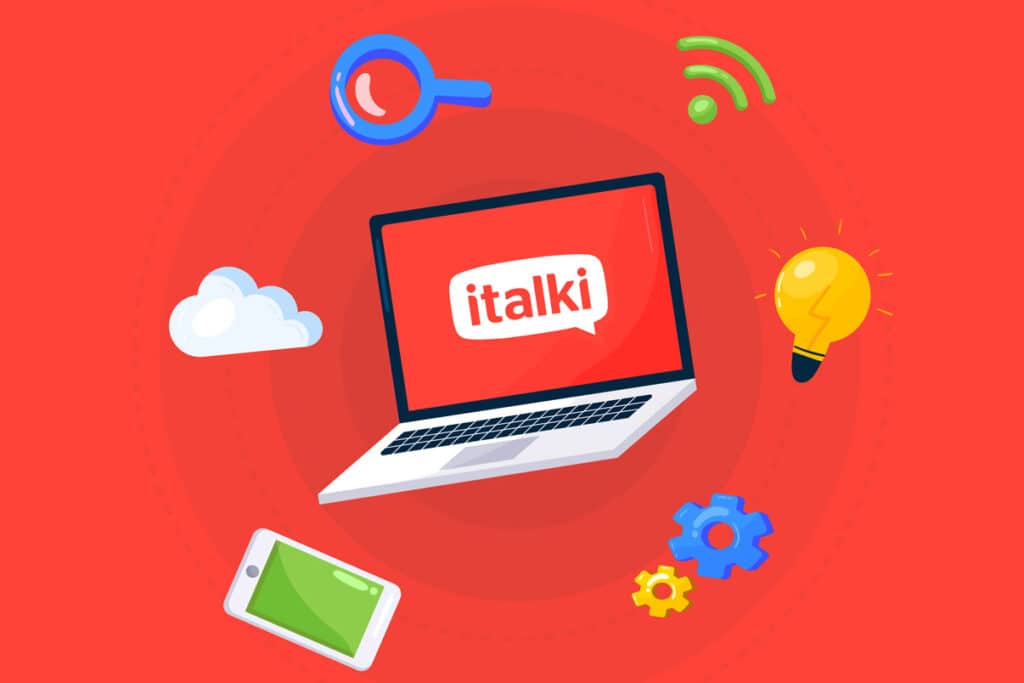
italki Review: Excellent for Finding Affordable, High-Quality Online Language Tutors
Speaking is one of the most challenging areas for language learners.
As a beginner, I once summoned up the courage to ask for something in a store where my target language was spoken. The owner looked me up and down and said: “You talkin’ to me?”
This unexpected reaction somehow threw me off.
This is why practicing your speaking skills is so important!
Fortunately, there are a lot of helpful language learning platforms out there, including italki.
This post is my in-depth italki review after using the platform for over five years. We’ll go over how it works, pros and cons, features, italki alternatives and more.
Overview
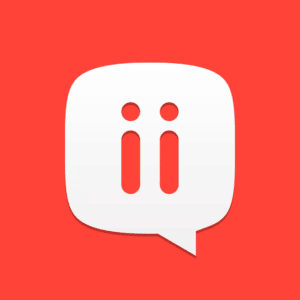
Name: italki
Description: A language tutoring website with a strong community of native speakers and language learners.
Languages offered: Any language!
Offer price: Rate varies by tutor, starting as low as $4 per lesson.
Summary
The italki website is a great platform for connecting with native speakers, improving your speaking skills and learning new words and phrases that textbooks won’t teach you. The value you get from the site varies by tutor, but you can shop around until you find a good fit for you.
- User friendliness - 8/108/10
- Delivers on promises - 10/1010/10
- Authenticity - 9/109/10
- Value for price - 9/109/10
Pros
- Has tutors in over 130 languages, including various dialects
- Lets you work within your own budget and pace
- Has free community and language exchange features
Cons
- Structured lessons can lead to less authentic and spontaneous learning
Contents
- What Is italki?
- How Much Does italki Cost?
- How Many Languages Does italki Offer?
- How Does italki Work?
- Your Guide to Using italki
- Other italki Features
- Pros of Using italki
- Cons of Using italki
- italki vs. Other Language Learning Programs
Download: This blog post is available as a convenient and portable PDF that you can take anywhere. Click here to get a copy. (Download)
What Is italki?
italki is a Shanghai-based language learning platform that was created in 2007.
Once you create a profile, you can search for the perfect tutor in your target language and filter the results by price, availability, country and more.
There’s a huge number of languages to choose from, from French to Tibetan, and the most popular languages have tons of tutors. For example, Spanish has more than 2,000 tutors, while Chinese has more than 1,000.
If you’re trying to learn a rare language, italki probably has a tutor for that!
How Much Does italki Cost?
It’s completely free to join italki—the only thing you pay for is the lessons you schedule with your tutors. Since each tutor has their own price per hour, you can make it as affordable or expensive as you want.
Some tutors charge as low as $4 an hour on italki, with others charging $80+.
There are also options to purchase lessons in packages.
For example, you can buy five, 10, 20, etc. lessons with a tutor at once, usually for a discount.
How Many Languages Does italki Offer?
italki currently offers lessons for over 130 languages.
They include the most common languages—like French, German, Spanish, Russian, etc.—and rare, endangered languages. Examples include Tibetan, Azerbaijani and more.
How Does italki Work?
Types of Tutors
italki has two types of tutors—Professional Teachers and Community Tutors.
Professional teachers usually have college degrees, years of experience teaching their language(s) and developed lesson plans.
On the other hand, community tutors are just native speakers who enjoy helping people learn their language through fun conversations.
I personally use community tutors way more often than professional teachers.
For one, because they’re usually cheaper. And secondly, even if you’re a beginner, most community tutors are good teachers.
If you want to focus on improving your conversational skills, I definitely recommend booking a community tutor. But if you’re preparing for a proficiency test or exam or want structured lessons and a curriculum, a professional teacher might better suit your goals.
One-on-One Video Lessons
Once you’ve selected a teacher, you’ll fill in other details and take a video lesson with them. Lessons range from 30 to 90 minutes.
It’s very flexible because you can decide with the teacher what type of lesson you want to do. The lessons might follow a specific textbook, consist simply of conversation practice or help you prepare for an exam—it’s up to you.
I’ve found italki invaluable for conversation practice since it’s not always easy to find native speakers to talk to in everyday life.
The quality of the lessons depends on the tutor, but I’ve had a good experience with most tutors I talked to. They’ve usually been on time and well-prepared, and they’d even take notes for me during the lessons and send me extra materials.
Since you’d usually book lessons one at a time, you can switch tutors easily if your current one doesn’t feel like a great fit.
Even better, you can rotate between several tutors to diversify. For example, I worked with a professional teacher before who guided me through structured lessons but also had a couple of tutors that I just practiced conversation with.
Your Guide to Using italki
Now that you’ve got an overview of italki, let’s dive into how exactly to use the platform:
Finding a Tutor
When you make your account, you’ll have to create a profile, which will display your language skills:
After your profile is finished, you can start hunting for tutors on the “Find a Teacher” tab:
After choosing which language you’re learning, you can then select filters for the kind of teacher you want. Here are some important options:
- Teacher is from. This is especially helpful if you’re learning a particular dialect or accent.
- Teacher types. Remember how we talked about Professional Teachers and Community Tutors? If you have a preference, specify it by clicking this tab.
- Speaks. If you want your tutor to speak a language other than their native one, you can click this tab. For example, selecting a teacher who also speaks English (or has a language in common with you) can be useful if you’re not as proficient in the language yet.
Other filters include lesson price, lesson time (you might only be available on certain days) or lesson category, like conversation practice and test preparation.
Each tutor’s page shows an introductory video, info on where they’re from and even their resume, along with their exact schedule. You can even look at student reviews.
Booking and Paying for Lessons
Tutors will usually offer different kinds of lessons. For example, this Japanese tutor offers conversation practice, lessons for beginners and textbook-based lessons, where he teaches from the “Minna no Nihongo” textbook:
To book a lesson, you’ll select a lesson type then choose the time, which will then be confirmed by the tutor.
When you first start using italki, you’ll be able to book trial 30-minute lessons a few times. If you want to do a lesson fast, there’s even an “instant lesson” option, where you can start a lesson within an hour.
There are two main ways to pay for italki lessons:
- Buy italki credits first then use them to pay for lessons as you wish
- Book a lesson and just pay for it right then
And as I mentioned earlier, many tutors also have options for purchasing lessons in bulk at a discounted rate.
Attending the Lesson
When you book the lesson, italki asks which platform you’d like to have it on.
You can choose from popular video chat platforms like Skype, WeChat, Zoom and more. Or, you can keep it simple and use italki Classroom.
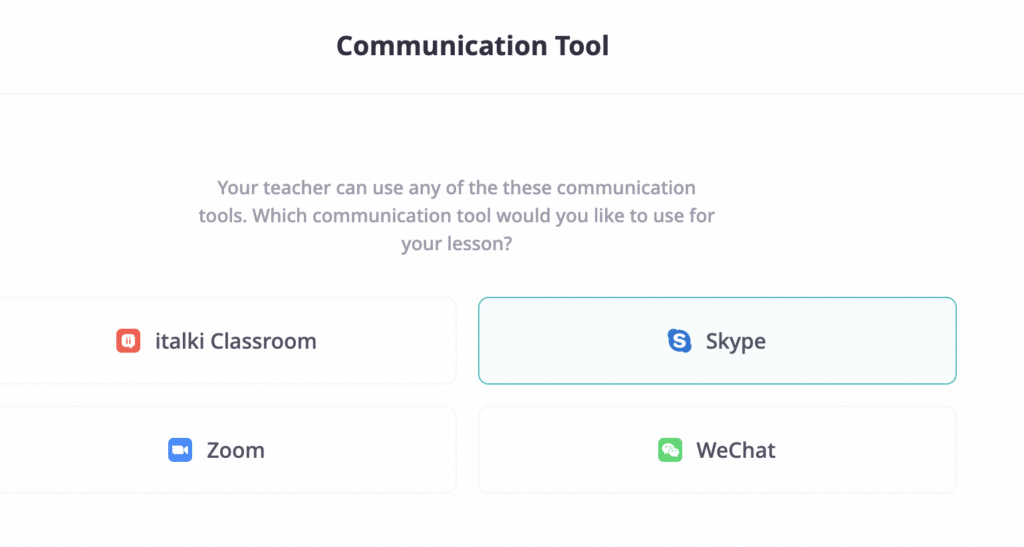
Wherever you choose to have the lesson, show up on time and enjoy getting to know and learning with your new tutor for however long you booked them!
After the lesson, italki will ask you to verify that the lesson was completed, which is optional. This way, if it’s not completed, you can request your credits back (and potentially get a refund).
Please note though, you’re required to pay the tutor if you cancel 24 hours before the lesson starts to respect their time.
You can then rate the tutor and even leave an optional review. And the tutor will also be able to leave private feedback for you!
Other italki Features
italki Group Classes
Group classes can be a more structured, social and cost-effective way to use italki than private lessons:
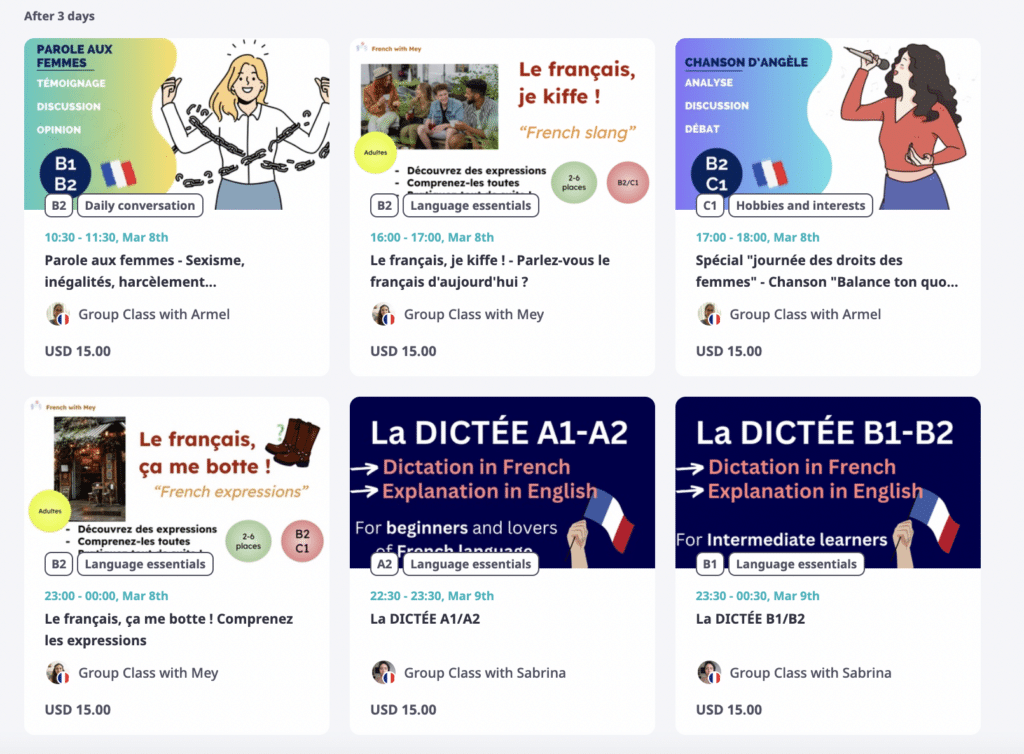
You can find tons of group classes happening at any week. For example, you can choose group classes that focus on:
- Daily conversation
- Language essentials
- Travel and global culture
- Debating and discussion
- Hobbies and interests
- Exam preparation
- And more
The classes are usually an hour long, with some being an hour and 30 minutes.
iTalki already offers group classes for several languages, including English, Spanish, French and Japanese.
The italki Language Challenge
A few times a year, italki offers its italki Language Challenge.
It’s free to register, and you can choose to commit 12, 16, 19 or 20 hours practicing your target language.
When you reach your goal, you get prizes!
To complete your goal, all you have to do is book lessons with a tutor and complete the lessons before the time duration is up. I’m currently registered for the 12-hour goal, and I have 13 days left to complete 9.5 hours of lessons.
italki Language Tests
You can take two types of tests on italki: the Oxford Online Placement Test for English grammar and their paid italki Language Test.
The italki Language Test is currently available for seven languages for $30: English, French, Spanish, German, Japanese, Portuguese and Italian. The test results use the global standards and match other widely recognized tests like the CEFR, TOEFL, TOEIC and more, with speaking abilities included.
The Oxford Online Placement Test is an English grammar exam and costs around $10.
Community Exercises
In the “Community” tab, you can go to the exercises section to find:
- Practice sentences in your native language from other people trying to learn it
- Posts from people looking for language partners
- Daily practice questions.
The daily practice questions are like prompts to inspire you to write your own journal entry in the community.
When a native speaker reads your exercise, they can give you corrections.
I use the post feature all the time:
Whenever I learn a new grammar structure or verb conjugation, I practice it by writing 10 sentences.
After I write my sentences, I type them into italki and ask native speakers to correct me.
And as a native speaker, you can help learners of your language, too! I’ve left several comments on English learners’ posts, offering them corrections.
You can also ask questions about the language in the question tab (or answer those about your native language).
Podcasts
italki’s tutors can create podcasts for learners. They cover a wide range of topics, from study motivation to vocabulary and grammar lessons.
For example, this professional Spanish teacher has created two podcasts where she explains commonly used Spanish expressions and daily vocabulary.
Pros of Using italki
Huge Variety of Languages
Many language learning platforms are selective regarding the languages they offer, and in this way, italki is probably one of the least restrictive.
First, you’ll find popular languages in the search bar. italki then provides a directory of languages in alphabetical order, making yours easier to find.
With less common languages such as Assiniboine and Basque available, it’s not only a wonderful way to get introduced to languages you may not have considered learning, but it also gives minority and endangered tongues a chance to shine.
italki goes one step further and narrows itself down even further into specific dialects.
This kind of detail is so refreshing as a language learner!
If you’re trying to learn a specific dialect (like Taiwanese Mandarin), you can most likely find it on italki. And if you can’t search specifically for the dialect, you can find a teacher from that country or region.
I’ve been learning Spanish for several years now. I specialize in the Venezuelan dialect because that’s where my dad is from.
So when I look for Spanish tutors on italki, I specify my search by selecting Venezuela in the “From” section.
Diverse Rates for Tutors
I already mentioned that your chosen tutor’s hourly rate is the only price you pay. But did you know just how low some tutors go?
When browsing tutors, you can refine your search to show tutors who fit your budget. And some tutors charge as little as $4 per hour.
I was learning Tagalog in the summer of 2019, and I consistently booked lessons with a community tutor from the Philippines two or three times a week. Her rate was $4 an hour, and I’ve had several Spanish tutors who charge $5-6 an hour.
Tutors are thoroughly vetted by italki so no matter how much the tutor charges, you know you’ll be getting quality.
Flexible Schedule
When you book a tutor, you don’t feel like you’re signing a contract. In fact, you can first book a 30-minute trial lesson with a tutor at a lower price than their standard rate.
After you’ve found a potential tutor, you can view their availability calendar to see if they have any times available that work with your schedule.
If not, you can just look for another tutor!
If you do want that “contract” feel (or just an extra push to make sure you show up and meet your goals), many tutors do offer package deals.
By choosing this route, you can purchase up to 10 lessons at once and schedule them whenever you’re ready, and usually at a discount price.
I did this with the Tagalog tutor I mentioned earlier, and it really helped me stay on track.
Additionally, many tutors offer multiple lesson duration options. This is great because if you really like a certain tutor, but can’t afford their hourly rate, you can choose their 30-minute lesson option at a lower price.
Many tutors offer 30-minute, 45-minute, 60-minute and 90-minute lessons.
Cons of Using italki
Lack of Real-world Situations
Is italki a good substitute for real-world situations?
The simple answer is no.
italki is probably the closest thing you can get to a real-world environment online, especially if you use it for finding language partners or having challenging conversations with native speaker tutors.
But you won’t ever experience spontaneous conversations like at the grocery store, bank, hospital, restaurant, etc.
Sure, the tutors can teach you idiomatic expressions and native ways of expressing something during a one-to-one lesson, but it’s still an artificial environment to some extent.
Inconsistent Tutor Quality
This applies to every tutoring platform. Even though italki verifies all of its tutors, I’d still suggest trying out a few different tutors at first before committing to one.
I’ve heard of some tutors not being good at explaining or adjusting to your level, for example, or sometimes they’re not just a good fit for your learning style.
Luckily, with so many options for tutors, you’re bound to find a good match for your language learning journey!
italki vs. Other Language Learning Programs
1. FluentU
With FluentU, you hear languages in real-world contexts—the way that native speakers actually use them. Just a quick look will give you an idea of the variety of FluentU videos on offer:

FluentU really takes the grunt work out of learning languages, leaving you with nothing but engaging, effective and efficient learning. It’s already hand-picked the best videos for you and organized them by level and topic. All you have to do is choose any video that strikes your fancy to get started!
Each word in the interactive captions comes with a definition, audio, image, example sentences and more.
Access a complete interactive transcript of every video under the Dialogue tab, and easily review words and phrases from the video under Vocab.
You can use FluentU’s unique adaptive quizzes to learn the vocabulary and phrases from the video through fun questions and exercises. Just swipe left or right to see more examples of the word you're studying.

The program even keeps track of what you’re learning and tells you exactly when it’s time for review, giving you a 100% personalized experience.
Start using the FluentU website on your computer or tablet or, better yet, download the FluentU app from the iTunes or Google Play store. Click here to take advantage of our current sale! (Expires at the end of this month.)
2. Preply
Like italki, Preply lets you browse hundreds of tutor profiles to find the right fit, with features like tutor videos, scheduling availability, student reviews, accreditations, etc.
The pricing is also relatively the same. Preply’s tutors can be as low as $5 but no higher than $40 per hour.
Preply has nothing like italki’s Community feature, so you only get tutoring sessions.
The payment system is also different. Instead of buying lessons as you go, Preply asks you to choose from different lesson packages. They’re usually 6, 12 and 20 hours, and the price is determined by the tutor’s rate.
If you don’t enjoy learning with your tutor anymore, you can transfer your purchased hours to a new tutor.
3. Verbling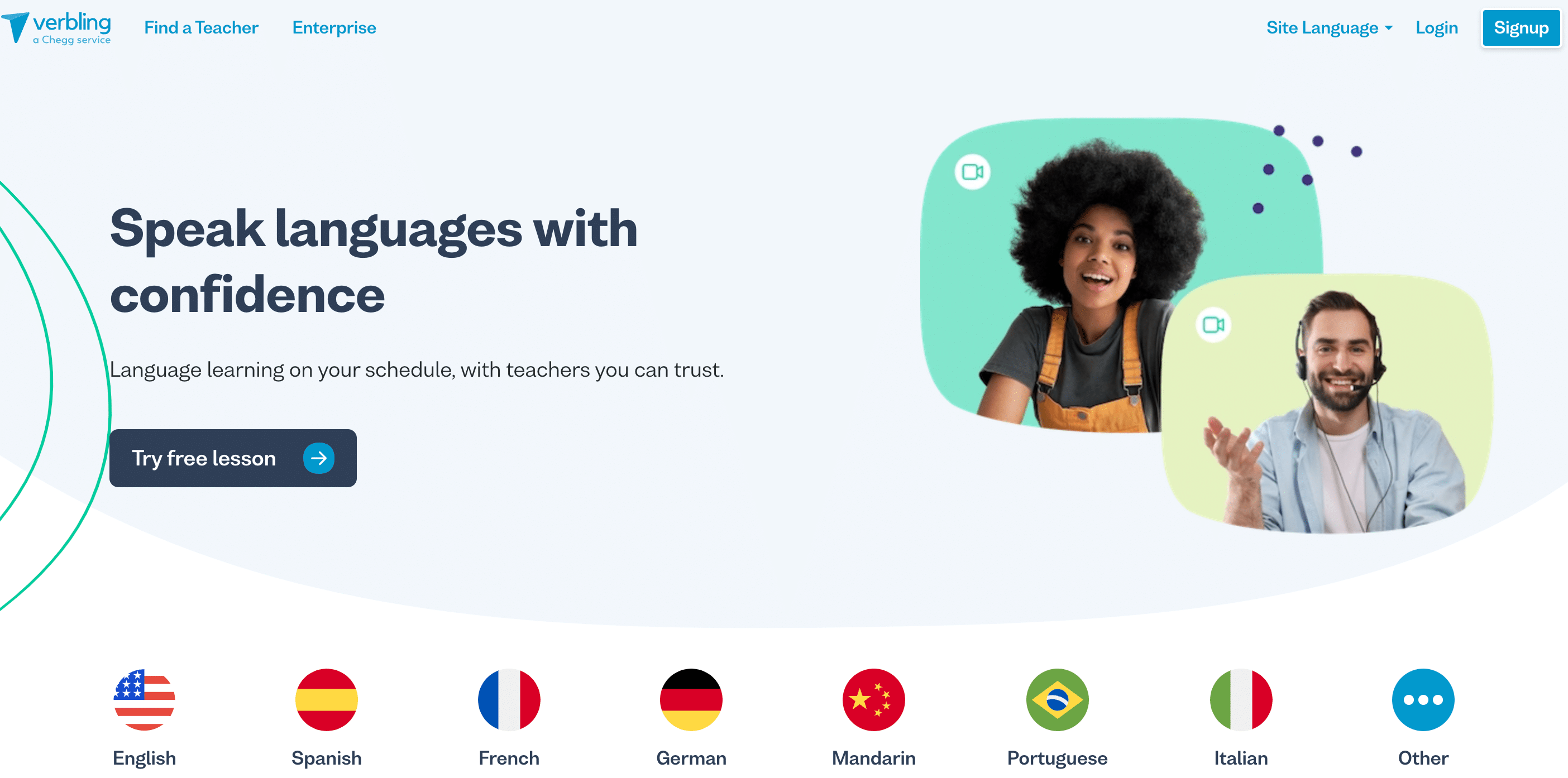
Unlike italki, all of Verbling’s tutors are professional, verified teachers with qualifications and prior experience.
There are over 2,000 tutors and over 70 languages available.
Once you’ve found a teacher who interests you, you can book a 30-minute trial lesson for free. During the lesson, you discuss your goals and get to know your new tutor.
Verbling also has various learning materials for you to use on the platform.
On the tutor’s profile, you can see at a glance which levels they teach, accents they specialize in, lesson subjects (i.e., business, conversation, exam prep) and what the lessons include, like homework and the curriculum.
4. Lingoda
Lingoda has become a popular choice in the language learning platform because of its unique challenge, the “Lingoda Sprint.”
No matter your current level, the Lingoda Sprint is a two-month challenge that promises to take you from nothing (or wherever you are currently) to speaking confidently.
Complete the challenge by taking live classes—either one-on-one or group classes—with a Lingoda tutor 15 times a month or 30 times (every day) per month. The 30-day challenge is called the Super Sprint, and if you complete it successfully, you get a 100% refund of your money.
If you complete the 15 classes per month Sprint, you get 50% back.
Of course, you don’t have to participate in the challenge and can always take one-on-one or group lessons normally as on other platforms.
The main difference is Lingoda’s language offerings. Lingoda only offers German, English, Business English, French and Spanish.
5. Duolingo
Duolingo is famous for trying to “gamify” language learning.
One of the oldest platforms, Duolingo teaches your target language by taking you through a series of game-like lessons that include translation exercises, matching, listening and more.
You have a personal, one-on-one teacher who customizes your lessons on italki. However, Duolingo follows a pre-made course structure that prevents you from skipping ahead.
So if you want to learn a language fast, be able to speak from day one or have a specific goal you’re preparing for (such as taking an exam or going on a business trip), I’d recommend italki over Duolingo.
6. Babbel
Babbel follows a specific course structure to teach your target language with lessons highly relevant to real-life situations.
The lessons include a variety of multimedia functions to help you learn and practice new words, such as “listen and repeat,” matching, translating, conversation fill-in-the-blanks and more.
While the lessons are a bit more relevant than those on Duolingo for all languages, it’s quite pricey for an app.
For example, a 6-month subscription is more than $50 and a lifetime membership is at least around $300.
Considering you can get an italki tutor for $4-$5 an hour (depending on the language), having a teacher who customizes your learning plan can be cheaper than paying for a Babbel course.
Plus, you’ll only have access to one language with Babbel unless you pay for the lifetime membership.
Overall, italki is a great platform for connecting with native speakers, improving your speaking skills and learning new words and phrases that textbooks won’t teach you.
